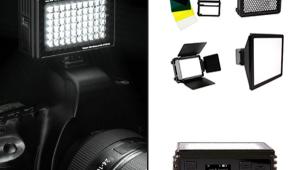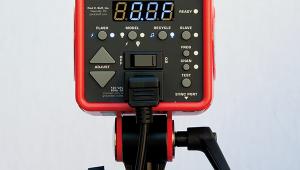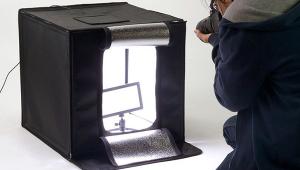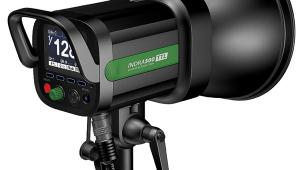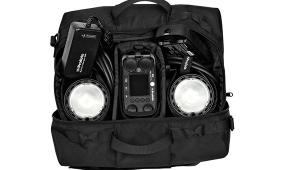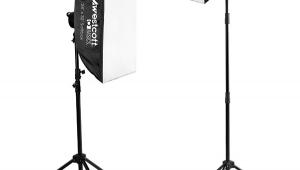Broncolor Siros 800 L Lighting Review: This Portable Monolight Packs Some Power
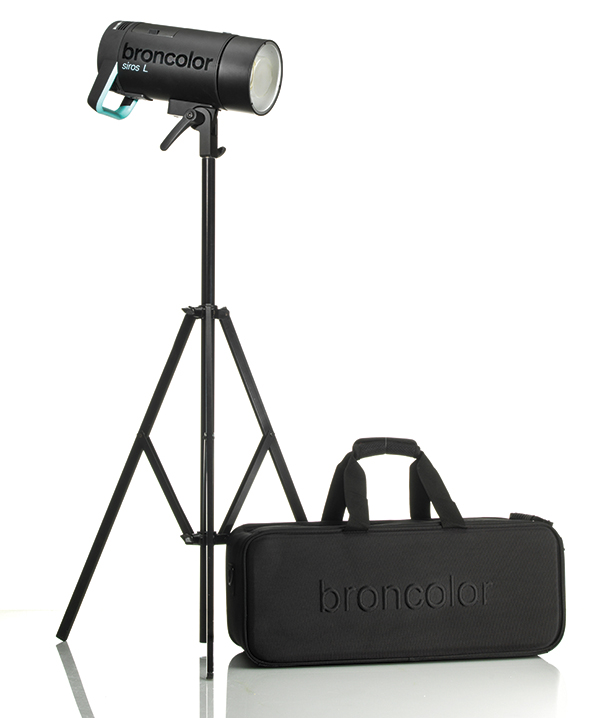
I love testing the new and latest lighting gear. The transformation from the analog to the digital age has meant rapid advancements in both camera and lighting equipment. The advent of the self-contained, battery-powered monolight is one of the prime areas where the manufacturers are all producing lights that are just as capable and easy to use in the field as they are in the studio.
Enter the Broncolor Siros 800 L ($2,347, includes the unit plus the battery, charger, and bag). The 800 is for 800 Watt seconds (Ws), while the L stands for Lithium battery. And the Broncolor stands for built like a tank. A 400 Ws unit is also available that offers half the power and has a lower price point but uses the same battery. I did not have access to that unit for testing.
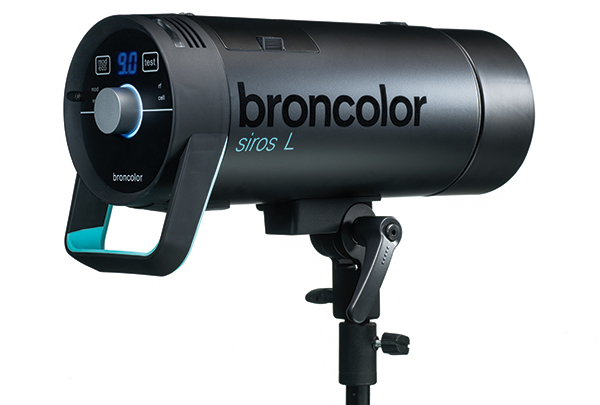
Build & Features
Like all things Broncolor, everything is substantial and built to last. The light arrived in a “flash bag.” That itself is a sturdy nylon bag with a dual zipper opener for quick access and padded interior compartments to cosset your light. It also holds the battery, charger, and the RFS 2.1 Transceiver ($177).
Looking at the light, we see a beautiful satiny-finished aluminum exterior with elegantly simple controls. Broncolor lights are still handmade in Switzerland and they are built to last. Many photographers have Broncolor lights for 30 plus years and all the modifiers since 1953 still fit the latest models! So while the products command a premium price, reliability and durability are outstanding. Everything also starts with a two-year warranty.
Let’s first take a look at some of the features and things I liked about the Siros 800 L.
First, there is the construction, as noted earlier. Next is power. The 800 Ws is currently the most power available on any self-contained monoblock. To do an unscientific real-world test, I metered the light at full power against another 640 Ws light and the Broncolor tested at about a half stop more light, so the claim is legit. I’d expect these power numbers to keep rising as batteries and technologies advance since working in bright light with modifiers such as softboxes and umbrellas will need plenty of power to give the photographer the small f/stops he may need.
Buyers will also have access to the complete and extensive line of Broncolor light modifiers. The unit I tested had no modifiers at all but it does have a slot for umbrellas. I did my entire test shooting with the flash “naked,” no modifiers at all. I thought I might use an umbrella to even the light spread but when I did some test shots at a blank wall I was surprised at how even the light was. Broncolor does use a protruding flash tube covered with a safety glass. The end is frosted slightly so I’m guessing that helps prevent a very hot spot in the center. Since I did all my shoots outside and wanted as much power as possible, I made the decision to use nothing and was very pleased with the results.
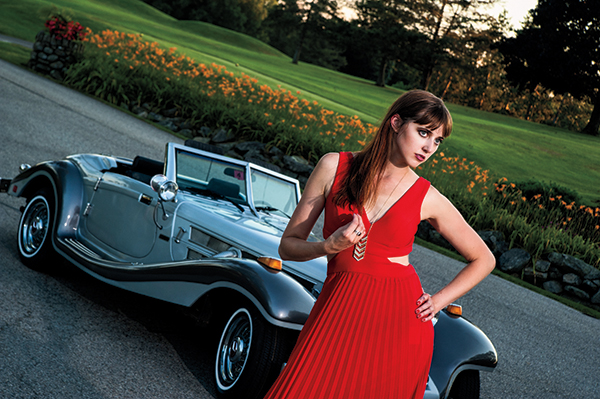
All Photos © Steve Bedell

Thoughts & Impressions
The battery is a really nice piece of engineering. It clicks solidly in the light and is designed to fit smoothly on the top for a nice clean look. It charges in 70 minutes with the supplied charger and can pump out 220 full-power flashes before needing to be plugged in again. It also has a button you can press in that shows you the level of power left in your battery via green lights, a handy feature if you want to see what you’ve got before installing it in the light. Extra batteries are about $300 if you want to add a safety factor or if you shoot on location extensively.
The light itself has several features available using the control dial. Like many newer cameras and lights, it has built-in Wi-Fi. I downloaded the bronControl app, which allowed me to control power output, take test shots and more using my iPhone. This becomes really useful when you have several lights to control and you can do it all from camera position instead of having to manually go around to each light. Broncolor even makes it easy to tell which light you’re controlling by changing the LED color of each light to match your app! Really slick but I only had one light so I didn’t get the opportunity to try this feature.
I did, however, try the Speed feature. This setting allows the flash to use the shortest possible speed and recycle faster. The only drawback is that unlike regular use, the color temperature may vary slightly toward the blue side, a very minor issue easily corrected in post. I used the Speed feature for my photo shoot with a BMX rider. I did have a minor quibble with the method used in accessing some of the commands like Speed using the rotary controller, which involves pressing the controller and turning it in just the right sequence. I had to watch a video about three times to get it right. It may be that I’m a knothead but it’s not very intuitive. Several other functions are also available via the rotary controller such as the modeling light status, Wi-Fi status, and the ability to shoot rapid-fire sequences, a feature I did not try. There is also an Eco mode that lengthens the recycle time but allows the flash to run cooler and last longer.
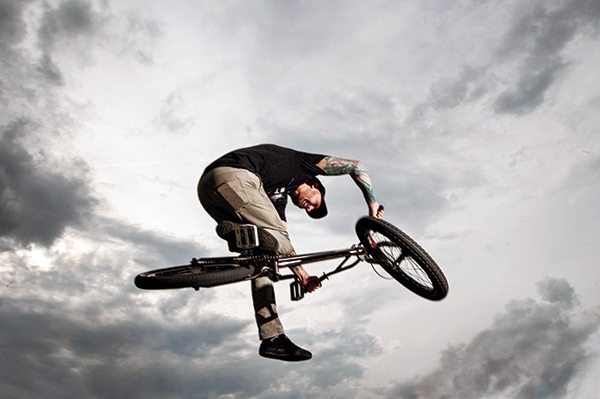
While we’re on the subject of the rotary controller, that is also the power controller. Once the light is turned on, you just turn the dial to adjust power. Turn it slowly and it moves in tenths of stops. Turn it quickly and it advances or declines in full stops. Very simple, very elegant. It should also be noted that the Siros uses the traditional European 10 scale for power settings over its nine-stop range from 4 to 800 Ws, with 10 being full power, 9 being one stop less, etc.
During my testing I used the Broncolor RFS 2.1 Transceiver to fire the light. It worked flawlessly. While we’re on that subject, let’s address a couple of points.
First, the light is not TTL nor does Broncolor have any plans to make it so. They believe that you should determine the exposure that is right for you and manually dial it into the light. As someone who shoots with studio lights all the time and wants a repeatable power output exposure after exposure, I can understand this philosophy.
I was, however, quite surprised to see that High Speed Sync was not offered. There is an indicator on the display that says HS, though, but it is not active. I reached out to my contact at Broncolor and he informed me that announcements regarding this would be coming at photokina. Basically, assume an update on HSS, maybe even by the time you read this.

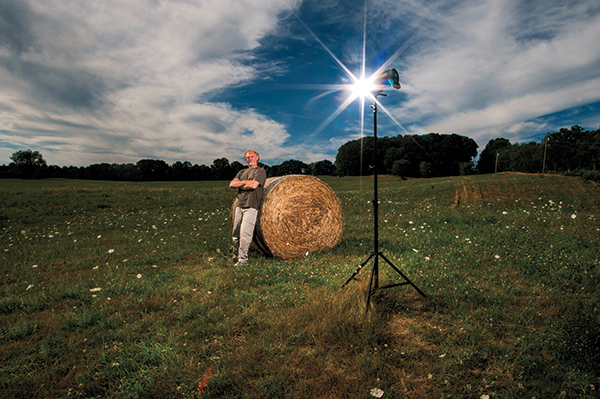
Conclusion
All in all, the Broncolor Siros 800 L is a very impressive piece of equipment. There are a few areas to also consider before purchasing. As mentioned before, the price. At $2,347, it is a premium price. As also mentioned earlier, consider the bank vault build quality and the number of years you can use it, too.
It’s also heavy. With the battery, it weighs about 10 pounds. Forget about using any lightweight stands with this light, you’ll need the heavy-duty jobs, especially once you start adding modifiers.
I also have to take a shot at something pretty minor. The cap that protects the light is robust so there’s little chance of damaging the flash tube during transport. It uses the same mounting system as the lighting modifiers, so you have to line the cap up just right to put it on and remove it. No problem putting it on, but when taking it off you can’t see how to line things up, so you have to keep spinning it around until things line up right. How about a line to match up on top of the unit, Broncolor? It’s a small thing but a simple thing that makes use much easier.
If you’re in the market for a very high-quality light or lights with exceptional build quality and access to an extensive line of lighting modifiers, I’d highly suggest taking a look at the Broncolor Siros 800 L.


